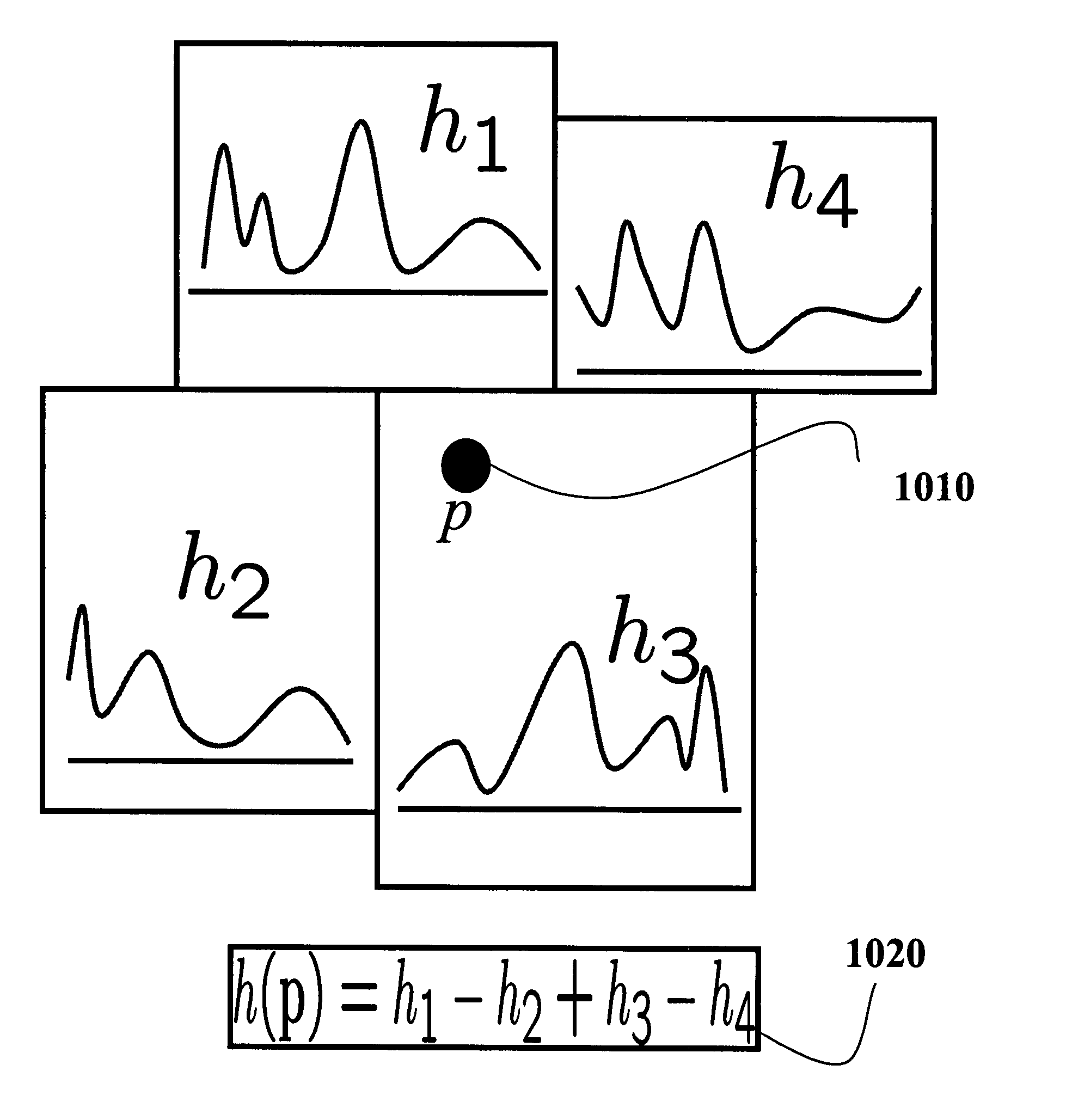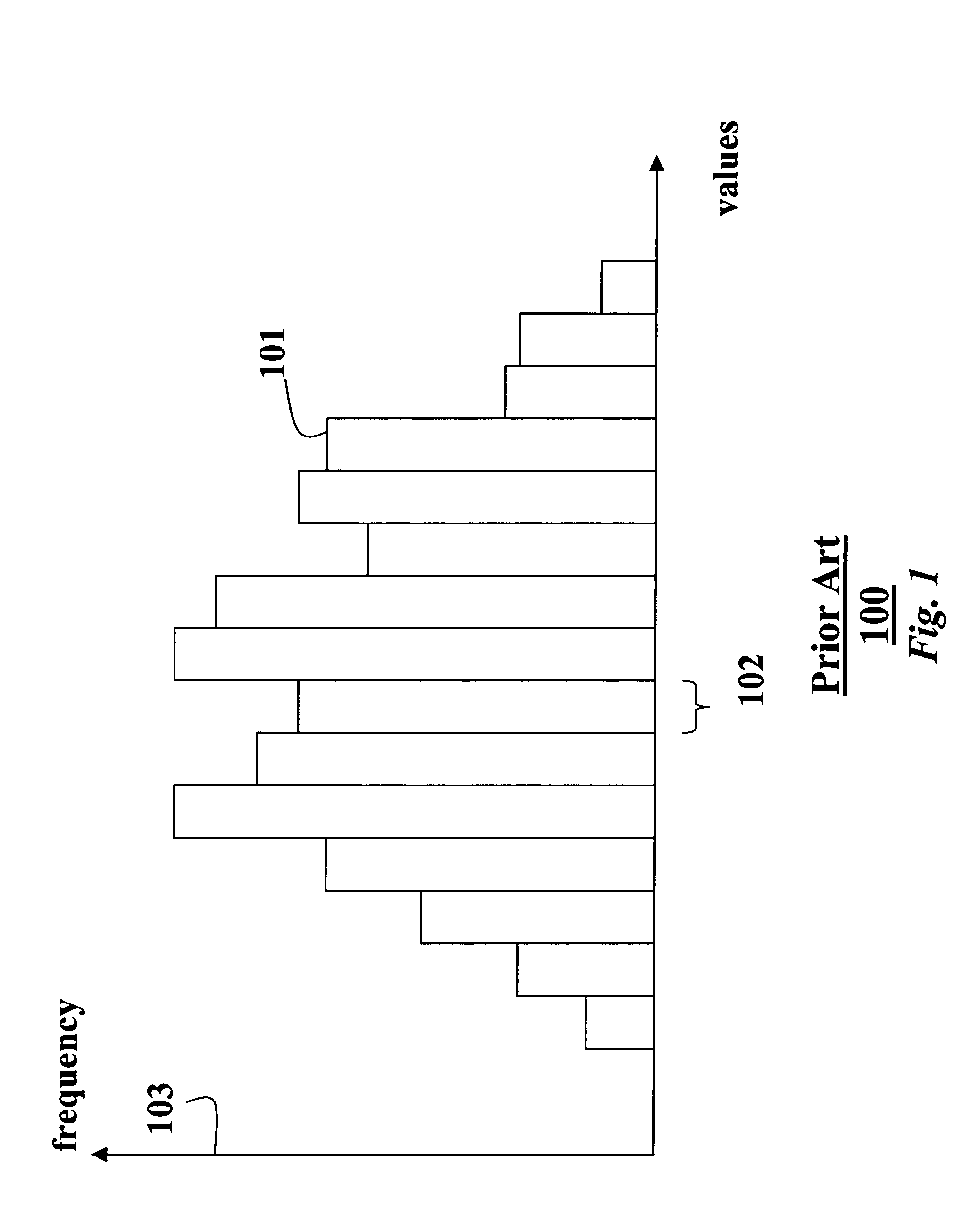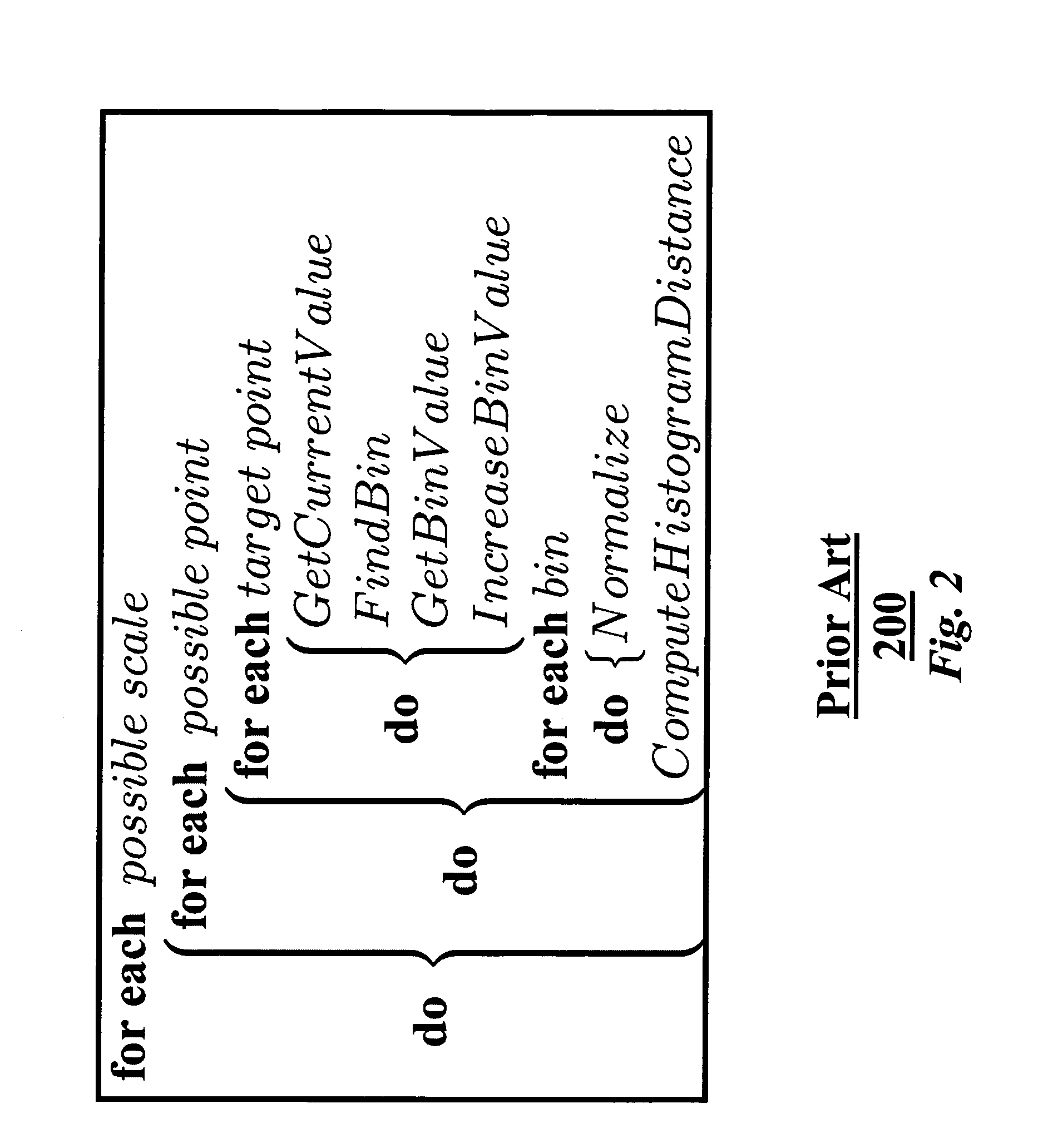Method of extracting and searching integral histograms of data samples
a histogram and data technology, applied in the field of data samples, can solve the problems of insufficient search process in real-time, method is extremely fast, etc., and achieve the effect of reducing the number of required operations
- Summary
- Abstract
- Description
- Claims
- Application Information
AI Technical Summary
Benefits of technology
Problems solved by technology
Method used
Image
Examples
Embodiment Construction
[0029]Integral Histogram
[0030]An integral histogram according to the invention is extracted from sampled data by a recursive propagation method. The method works in Cartesian spaces. The method can be extended into any dimensional data space and any tensor representations.
[0031]A function ƒ such as x→ƒ(x), is a defined in a d-dimensional real valued Cartesian space , where x=[x1, . . . , xd] are sample points in the space. The function ƒ maps to a k-dimensional tensor, i.e., ƒ(x)=[g1, . . . , gk]. The d-dimensional data space is bounded within a range N1, . . . , Nd, i.e., 0≦xi≦Ni.
[0032]An integral histogram H(x, b) is defined along a scanline of points x0, x1, . . . , such that:
[0033]H(x,b)=⋃p=0xQ(f(p)),(1)
where Q(.) gives the corresponding bin of a current point, and ∪ is the union operator that is defined as follows.
[0034]The value of the bin b of the histogram H(x, b) is equal to the sum of bin values of previously scanned points of the histogram, i.e., the sum of all Q(ƒ(p)...
PUM
 Login to View More
Login to View More Abstract
Description
Claims
Application Information
 Login to View More
Login to View More - R&D
- Intellectual Property
- Life Sciences
- Materials
- Tech Scout
- Unparalleled Data Quality
- Higher Quality Content
- 60% Fewer Hallucinations
Browse by: Latest US Patents, China's latest patents, Technical Efficacy Thesaurus, Application Domain, Technology Topic, Popular Technical Reports.
© 2025 PatSnap. All rights reserved.Legal|Privacy policy|Modern Slavery Act Transparency Statement|Sitemap|About US| Contact US: help@patsnap.com



